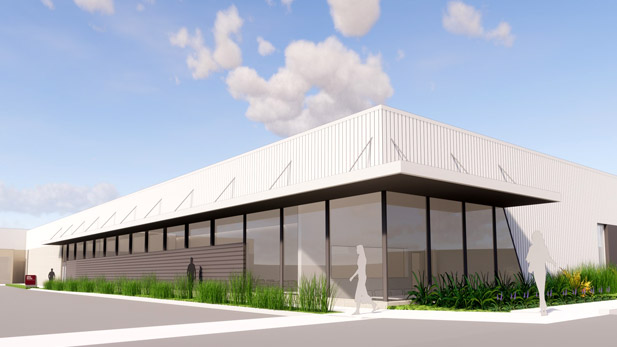Ground Broken on New Design and Laboratory Building

The new building will serve as a metaphorical bridge between curricular and co-curricular activities on campus with design space, labs and classrooms to enhance hands-on, collaborative educational experiences for students.
Rose-Hulman has broken ground on a 13,800-square-foot engineering design and laboratory building adjacent to the Branam Innovation Center. The new structure will provide design space, laboratories and classrooms to enhance hands-on, collaborative educational experiences for students.
The $2.2 million building on the northeast end of campus is expected to be complete in late November 2018 for use at the start of the winter academic quarter of the 2018-19 school year.
President Jim Conwell noted that the adjacent 16,200-square-foot Branam Innovation Center (“the BIC”), which opened in 2011, has become so popular with students that additional workspace was needed to accommodate competition teams, design projects, robotics, makerspace and special-interest activities.
“Students often proclaim that the BIC may be the best thing about Rose-Hulman,” the president said. “We are running out of room for all of the activity that students and faculty are generating. This new building will alleviate that pressure and help us separate larger, messier projects from smaller, ‘cleaner’ ones. I’m particularly excited that the co-location of classrooms and project space will support faculty in incorporating hands-on activities in their instruction.”
Provost Anne Houtman has dubbed the addition “The Bridge” because the building will serve as a metaphorical bridge between curricular and co-curricular activities on campus. A permanent name has not yet been selected.
The new building will have laboratories and classrooms for the new major in engineering design, which debuts this fall, and dedicated design space, as well as “maker space” and equipment for rapid prototyping and both digital and traditional fabrication. A fluids laboratory, wind tunnel testing equipment, and engine testing—activities now housed in the Rotz Lab--will become part of the new facility as the Institute prepares to vacate that aging structure.